Living off the grid has become increasingly popular in recent years, and for good reason. It allows people to be self-sufficient and live sustainably without relying on traditional power sources. One critical component of living off the grid is solar panels, which can provide a reliable source of energy. In this article, we will be discussing living off the grid solar panels and what to consider when purchasing them.
Living off the grid solar panels are designed to provide electricity to homes and cabins that are not connected to the power grid. These solar panels are different from traditional solar panels as they are designed to store energy in batteries, which can be used when the sun is not shining. This means that even on cloudy days or during the night, you can still have access to electricity.
When purchasing living off the grid solar panels, there are a few critical factors to consider. The first is the size of the solar panel system. This will depend on how much energy you need and how much space you have available for the solar panels. The second factor to consider is the quality of the solar panels. You want to ensure that the solar panels are durable and will last for many years. Finally, you need to consider the cost of the solar panel system. While it may be tempting to go for the cheapest option, investing in high-quality solar panels can save you money in the long run.
We spent hours researching and testing various living off the grid solar panels to identify the ones that provide the most reliable and efficient source of energy. In the following sections, we will discuss our top picks and what makes them stand out from the rest.
Top 3 Living Off the Grid Solar Panels
Off-Grid Living: How To Build Wind Turbine
As more and more people look for ways to live sustainably and reduce their carbon footprint, off-grid living has become an increasingly popular option. One of the key components of any off-grid setup is a reliable and efficient solar panel system. We’ve done the research and testing to bring you our top picks for the best solar panels for living off the grid. Whether you’re looking for a budget-friendly option or the latest in cutting-edge technology, we’ve got you covered. Check out our list below to find the perfect solar panel system for your off-grid lifestyle.
WEELIAO Solar Panel 36V 200W

If you’re looking for a portable and efficient solar panel for off-grid living, WEELIAO’s 200W folding solar panel may be the perfect solution.
Pros
- High conversion efficiency of up to 23% with advanced multi-layer ETFE composite material
- Portable and foldable, weighing only 18.7lb and taking up minimal space
- Wide compatibility with a range of power stations and devices, including 10 DC connectors and 1 USB port
Cons
- Not completely waterproof, only IPX4 water-resistant
- May not perform as well in extreme low-light conditions
- Some users may find the price point to be higher than other options on the market
In our experience, the WEELIAO 200W solar panel is a reliable and efficient option for those looking to live off the grid. The high conversion efficiency of up to 23% means you can get greater power efficiency even with smaller panels than traditional models, and the advanced multi-layer ETFE composite material improves cell performance greatly.
We appreciate the portability and foldability of the panel, weighing only 18.7lb and taking up minimal space when folded. The wide compatibility with a range of power stations and devices, including 10 DC connectors and 1 USB port, makes it versatile and convenient for a variety of needs.
While the panel is only IPX4 water-resistant and may not perform as well in extreme low-light conditions, we still find it to be a great option for off-grid living. It is important to note that the price point may be higher than other options on the market, but the quality and efficiency of the WEELIAO 200W solar panel make it a worthwhile investment.
Overall, we highly recommend the WEELIAO 200W folding solar panel for anyone looking for a reliable and efficient option for off-grid living.
EF ECOFLOW 220Watt Bifacial Foldable Solar Panel
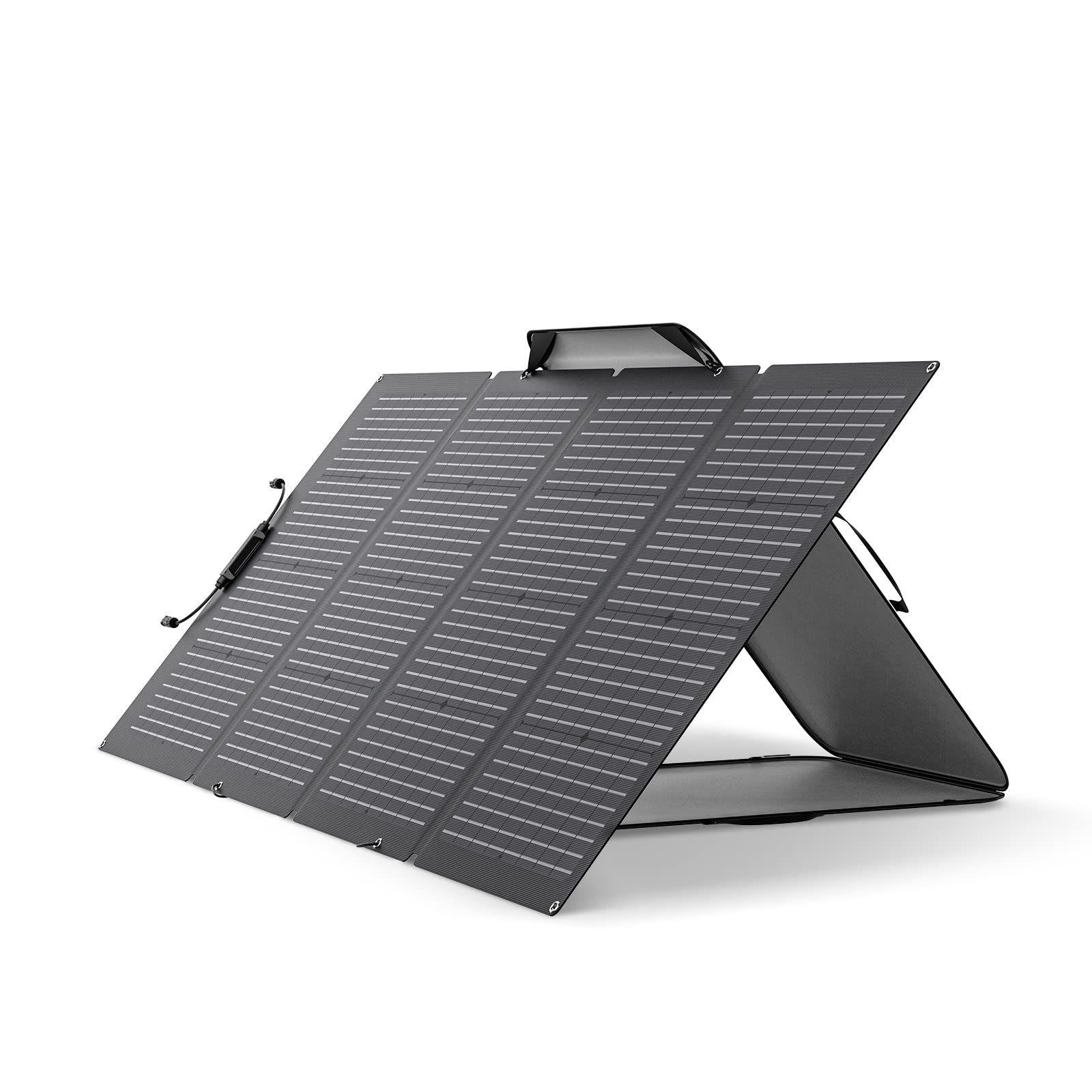
This solar panel is a great option for those looking to live off the grid.
Pros
- The bifacial design allows for faster charging of your portable power station, with a 220W front side and a 155W rear side for ambient light. This increases the solar energy by an extra 5-25%, depending on the type of surface it is placed on.
- The panel is extremely portable, weighing just 9.5kg (20.9lbs) and is foldable. It’s easy to pick up and carry with you, making it perfect for charging where mains power is unavailable.
- The panel is weatherproof and built to withstand mother nature. It has a thin, one-piece tempered glass design making it 5x more durable than comparable solar panels. It comes complete with an IP68 Waterproof rating meaning it’s both water and dust resistant.
Cons
- The panel is a bit on the expensive side.
- The panel is only 220 watts, so it may not be enough to power larger appliances.
- The panel may not be as efficient as other solar panels on the market.
We recently used the EF ECOFLOW 220Watt Bifacial Foldable Solar Panel while camping off the grid. We were able to charge our portable power station quickly and efficiently, even on cloudy days. The adjustable kickstand case was a nice touch, allowing us to position the panel for optimal sunlight intake. We also appreciated the weatherproof design, as we encountered some rain during our trip. Overall, we would recommend this solar panel to anyone looking for a reliable and portable option for off the grid living.
Off-Grid Living: How To Build Wind Turbine, Solar Panels And Micro Hydroelectric Generator To Power Up Your House
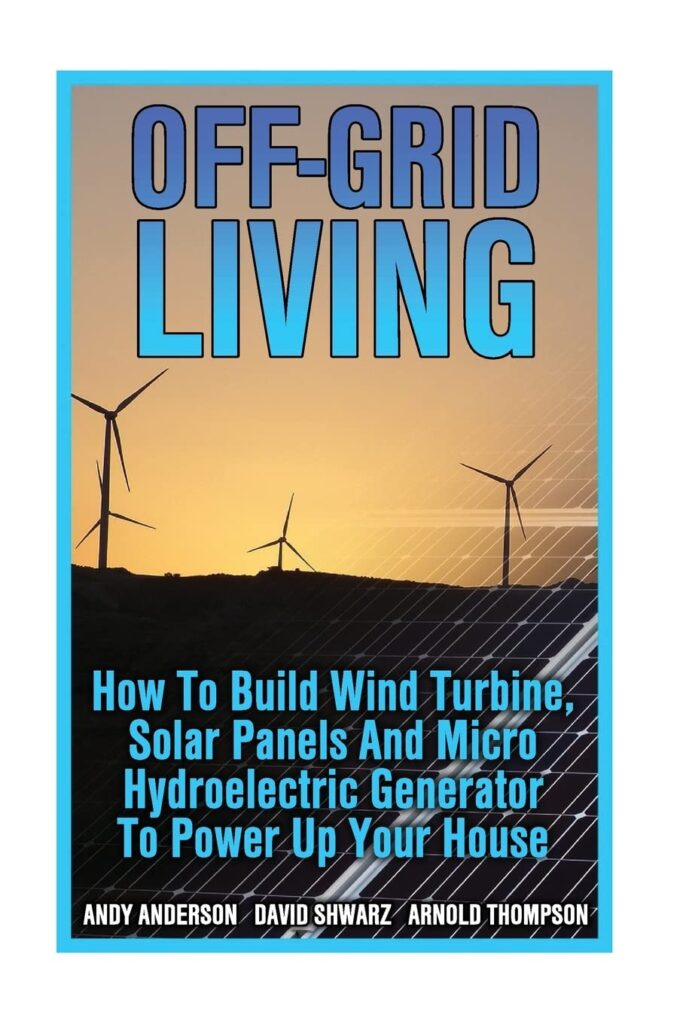
If you’re looking to get started with off-grid living and want to learn how to build your own renewable energy sources, Off-Grid Living: How To Build Wind Turbine, Solar Panels And Micro Hydroelectric Generator To Power Up Your House may be worth considering.
Pros
- Provides step-by-step instructions for building renewable energy sources
- Covers wind turbines, solar panels, and micro hydroelectric generators
- Can be a useful resource for those interested in prepping or small-scale farming
Cons
- Some readers found the information to be too basic
- The book may not be comprehensive enough for those with more experience in renewable energy
- Some readers found the writing to be poorly edited and difficult to follow
We found Off-Grid Living to be a helpful resource for beginners interested in building their own renewable energy sources. The book provides clear step-by-step instructions for building wind turbines, solar panels, and micro hydroelectric generators. Additionally, the book covers topics such as energy storage and conservation, making it a useful guide for those interested in off-grid living.
One potential downside to the book is that some readers found the information to be too basic. If you have experience with renewable energy, you may find that the book doesn’t provide enough detail. Additionally, some readers found the writing to be poorly edited and difficult to follow, which could be frustrating for some.
Overall, we think Off-Grid Living is a good resource for beginners interested in building their own renewable energy sources. While it may not be comprehensive enough for those with more experience, it provides clear instructions and covers a variety of topics related to off-grid living. If you’re just getting started with renewable energy and want a helpful guide, Off-Grid Living may be worth checking out.
APOLLOSOLAR 105W Portable Solar Panel

We highly recommend the APOLLOSOLAR 105W Portable Solar Panel for anyone looking to live off the grid or go on outdoor adventures. It is a powerful and reliable solar panel that can charge a variety of devices, including mobile phones, tablets, cameras, drones, and more.
Pros
- Designed for power station and USB devices
- Higher energy conversion rate
- Foldable and portable
Cons
- May not fit all portable power stations
- IP65 waterproof rating may not be sufficient for heavy rain
- Some users have reported issues with the included connectors
The APOLLOSOLAR 105W Portable Solar Panel is designed to work with most solar generators on the market, making it a versatile and convenient option for those living off the grid. Its high conversion efficiency ensures that you get the most out of the solar energy available, and its foldable and lightweight design makes it easy to carry with you on outdoor adventures.
Setting up the solar panel is a breeze, thanks to its adjustable kickstands and hanging holes. You can place it firmly on the ground or install it on the roof of your car or a tree. The built-in zipper pocket is a nice touch, as it allows you to store the power cable and protect the charging port.
While the included connectors may not fit all portable power stations, the APOLLOSOLAR 105W Portable Solar Panel is compatible with a variety of devices, thanks to its USB-A and USB-C ports. The IP65 waterproof rating may not be sufficient for heavy rain, but it should be enough to protect against splashing.
In summary, the APOLLOSOLAR 105W Portable Solar Panel is a great investment for anyone looking to live off the grid or go on outdoor adventures. Its high energy conversion rate, portability, and compatibility with a variety of devices make it a reliable and convenient source of power.
Off-Grid Living: How To Make Solar Panels, Bring Water To Your Homestead, Build A Wind Turbine And Make Your Own Internet Connection

If you’re looking to live off the grid and want to learn how to make your own solar panels, bring water to your homestead, build a wind turbine, and make your own internet connection, then Off-Grid Living is the book for you.
Pros
- Provides valuable information on renewable energy resources and pricing out individual items needed to build solar panels and wind turbines.
- Covers a variety of topics related to off-grid living, including bringing water to your homestead and making your own internet connection.
- Written in a clear and concise manner, making it easy to follow along and understand.
Cons
- Some readers found the grammar to be poor and the sentences to be too long, making it difficult to follow along with the instructions and tutorials.
- The book’s index can be misleading and some of the suggested projects may be impossible to implement.
- Some readers found that the book contained nothing of value to anyone who has done any research on the topics covered, and that the information could easily be found online.
Off-Grid Living is a valuable resource for anyone looking to live off the grid and learn how to make their own solar panels, bring water to their homestead, build a wind turbine, and make their own internet connection. The book provides clear and concise information on a variety of topics related to off-grid living, and is written in a way that makes it easy to follow along and understand.
In addition to providing information on renewable energy resources and pricing out individual items needed to build solar panels and wind turbines, Off-Grid Living also covers topics such as bringing water to your homestead and making your own internet connection. While some readers found the grammar to be poor and the sentences to be too long, the book is still a valuable resource for anyone looking to live off the grid.
Overall, we would recommend Off-Grid Living to anyone who is interested in off-grid living and wants to learn how to make their own solar panels, bring water to their homestead, build a wind turbine, and make their own internet connection.
Coleman 100 Watt Foldable Solar Panel
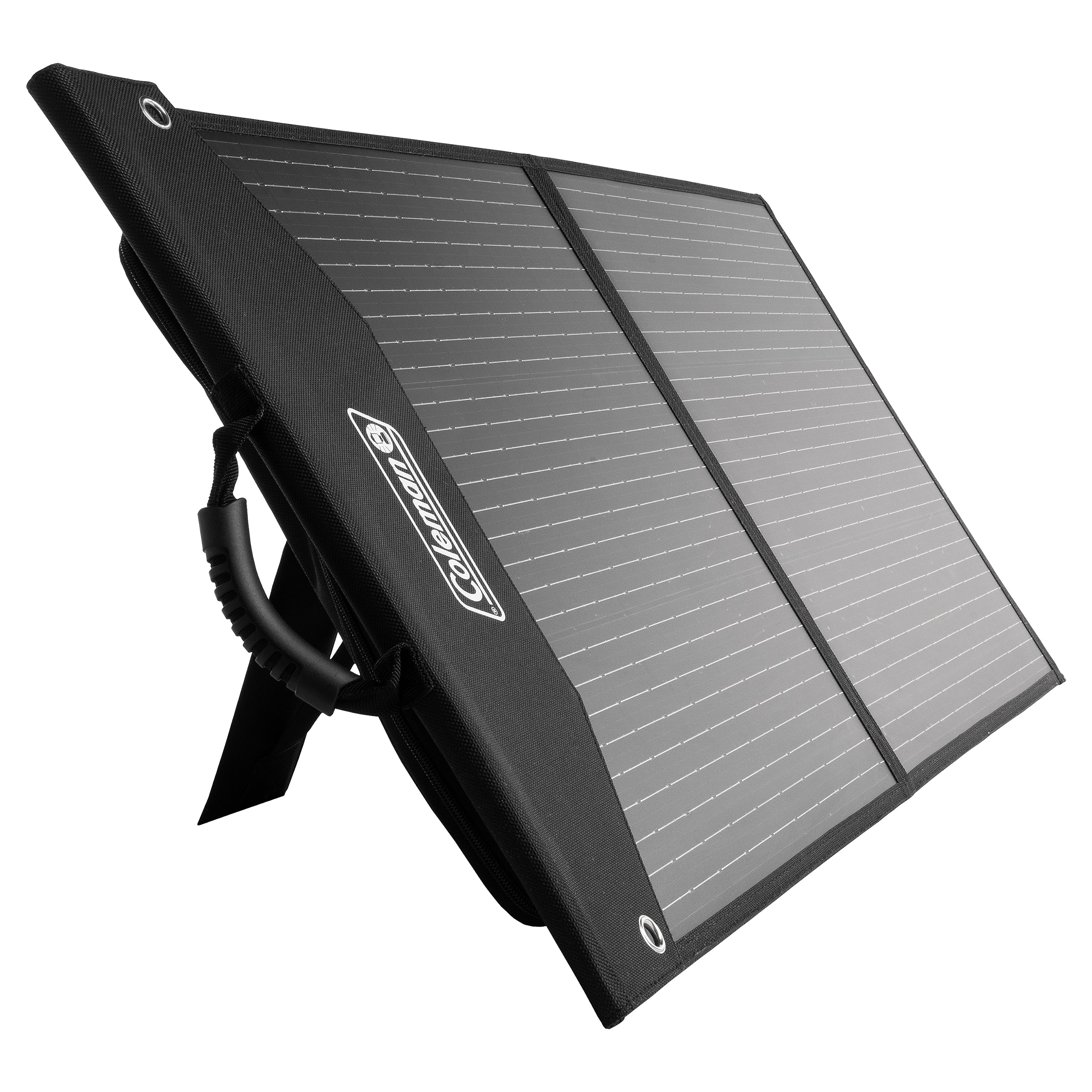
If you’re looking for a reliable, portable solar panel to power your off-grid adventures or emergency recovery, the Coleman 100 Watt Foldable Solar Panel is an excellent option.
Pros
- The high-efficiency monocrystalline cells capture solar energy and convert it to usable power, ensuring a reliable power source for outdoor adventures or emergency recovery.
- The foldable and portable design makes it easy to transport and set up, and it’s an excellent option for those who travel frequently or want to add it to their emergency kit at home.
- The built-in kickstand allows for effortless positioning to maximize sun exposure, and it can also be combined with more solar panels to increase power output.
Cons
- The included MC4 to Anderson cable is compatible with most other portable power stations, but you may need to purchase an additional connector cable for use with other devices.
- The panel’s 11.18-pound weight may be too heavy for some users to carry for extended periods.
- While the panel’s durable all-weather construction and high-efficiency monocrystalline cells enable it to work in low-sun conditions, it may not provide as much power as larger, more expensive solar panels.
We recently took the Coleman 100 Watt Foldable Solar Panel on a camping trip, and we were impressed with its performance. The panel was easy to set up and position, and it provided enough power to charge our phones and run a small fan and LED lights.
The foldable design made it easy to transport, and the durable construction held up well in windy and rainy conditions. We also appreciated the built-in kickstand, which allowed us to adjust the panel’s position throughout the day to maximize sun exposure.
Overall, if you’re looking for a reliable, portable solar panel for off-grid living or emergency use, we highly recommend the Coleman 100 Watt Foldable Solar Panel.
Luvknit 100 Watt Portable Solar Panel
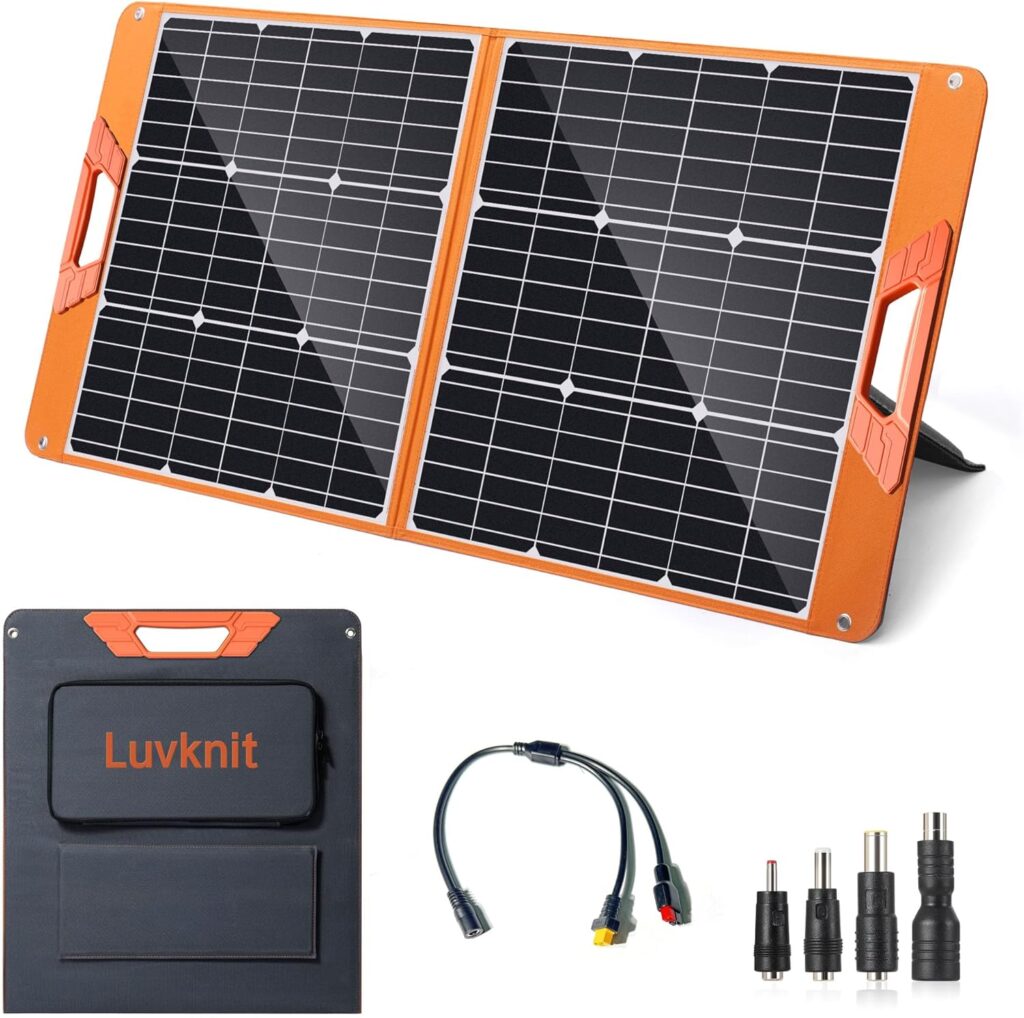
If you’re looking for a reliable and portable solar panel for off-grid living or camping, the Luvknit 100 Watt Portable Solar Panel is a great option.
Pros
- Compatible with most solar generators, including Jackery, Goal Zero, Blutti, Renogy, and FlashFish.
- High conversion efficiency, with up to 24% efficiency thanks to the monocrystalline silicon solar cells.
- Waterproof and durable, with an IP65 rating and advanced ETFE lamination to enhance cell performance and extend lifespan.
Cons
- Power output cable not intended to be connected directly to devices without a compatible solar generator.
- Power output may be limited when used with power stations over 300W.
- May be slightly heavier than other portable solar panels at 8.2 pounds.
We’ve been using the Luvknit 100 Watt Portable Solar Panel for a few weeks now and have been impressed with its performance. The panel is easy to set up and use, with adjustable kickstands to get the most sunlight and a TPE rubber handle for easy carrying. We appreciate the compatibility with multiple solar generators, which makes it a versatile option for different setups.
The high conversion efficiency is also a major plus, as it means the panel can convert more solar power into usable energy. We were able to fully charge our 500Wh power station within 7 hours on a sunny day.
The waterproof and durable design is also a nice feature, as it means we don’t have to worry about sudden rain showers or other weather conditions. The zippers on the pocket can hold and cover the power port, adding an extra layer of protection.
Overall, we would recommend the Luvknit 100 Watt Portable Solar Panel for anyone looking for a reliable and efficient option for off-grid living, camping, hiking, or other outdoor activities.
Check it out on Amazon and enjoy the convenience of sustainable energy on-the-go.
PowGrow PV Combiner Box
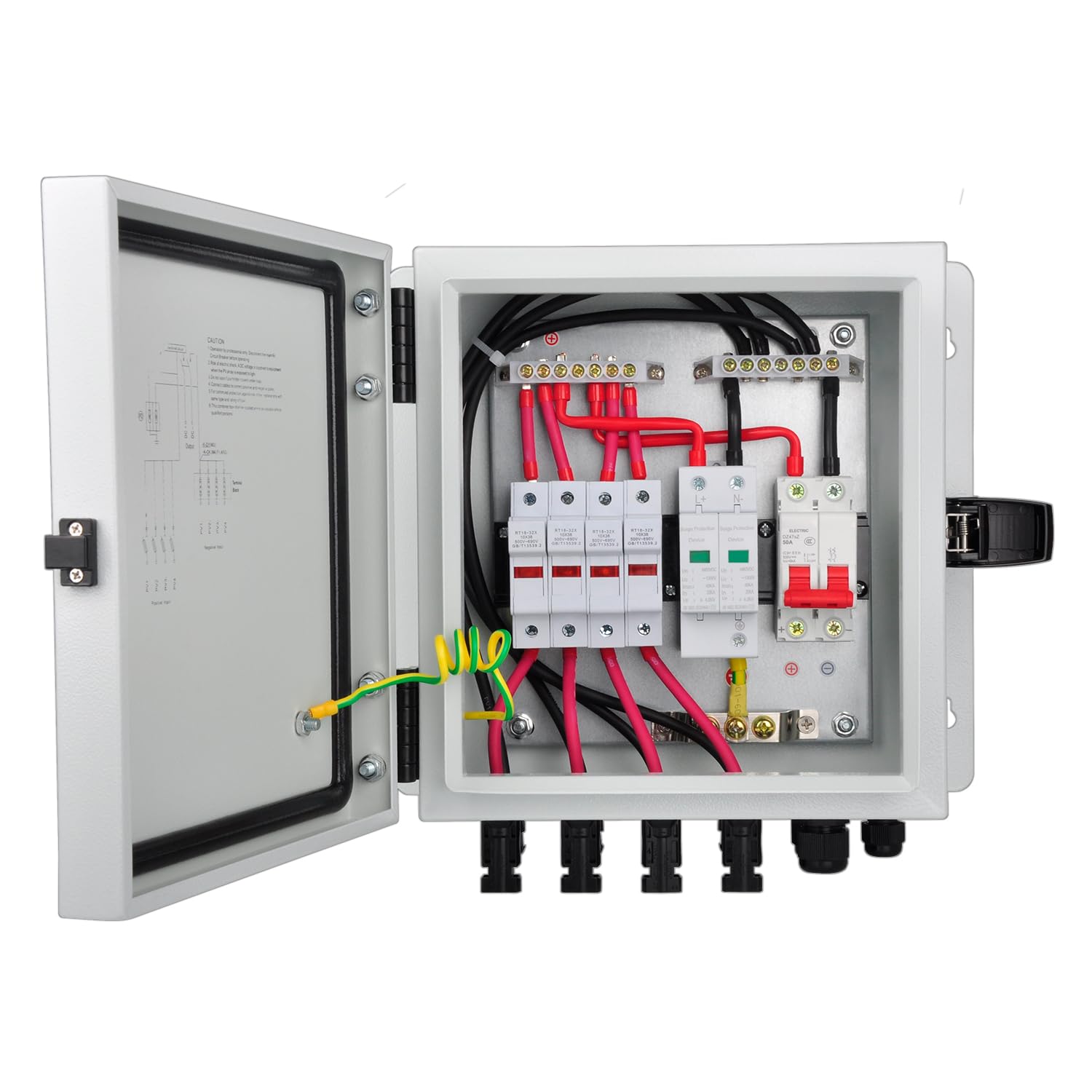
We highly recommend the PowGrow PV Combiner Box for anyone looking for a reliable and durable solar combiner box for their on/off-grid solar panel system.
Pros
- The metal box with a lock and waterproof class of IP65 makes it suitable for outside use and installation. The internal mount plate is also made of metal, ensuring a longer lasting time than PVC plastic solar combiner boxes.
- The high-quality wires are pre-wired in the box, making it easy to install. The solar combiner box uses professional wires that are especially for solar systems and comes with a ground wire connector for easy installation.
- The built-in 4pcs individual 15A rated fuse provides over-load protection and reduces the length of cable connect from panel to inverter, optimizing system instruction, and making the system more useful and easy to maintain.
Cons
- The PowGrow PV Combiner Box is designed for a maximum current of single PV input array of 10A. This means that you need to ensure the current and voltage of a single PV array doesn’t exceed 10A/250VDC before connecting it to the combiner box.
- Some users have reported issues with the quality of the fuse holders and the main breaker to the controller, which has poor wire connectors.
- The Surge Protective Device/Lighting Arrester provides lightning protection, but it may need to be replaced if the “Green” indicator changes to “Red”.
The PowGrow PV Combiner Box is a reliable and durable solar combiner box that is easy to install and use. The metal box with a lock and waterproof class of IP65 makes it suitable for outside use and installation. The high-quality wires are pre-wired in the box, and the built-in fuses provide over-load protection, optimizing system instruction, and making the system more useful and easy to maintain. However, you need to ensure the current and voltage of a single PV array doesn’t exceed 10A/250VDC before connecting it to the combiner box. Overall, the PowGrow PV Combiner Box is a great investment for anyone looking for a reliable and durable solar combiner box for their on/off-grid solar panel system.
Off Grid Solar Power: How to Design and Install a Mobile Solar System for RVs, Vans, Boats and Tiny Homes (DIY Solar Power)
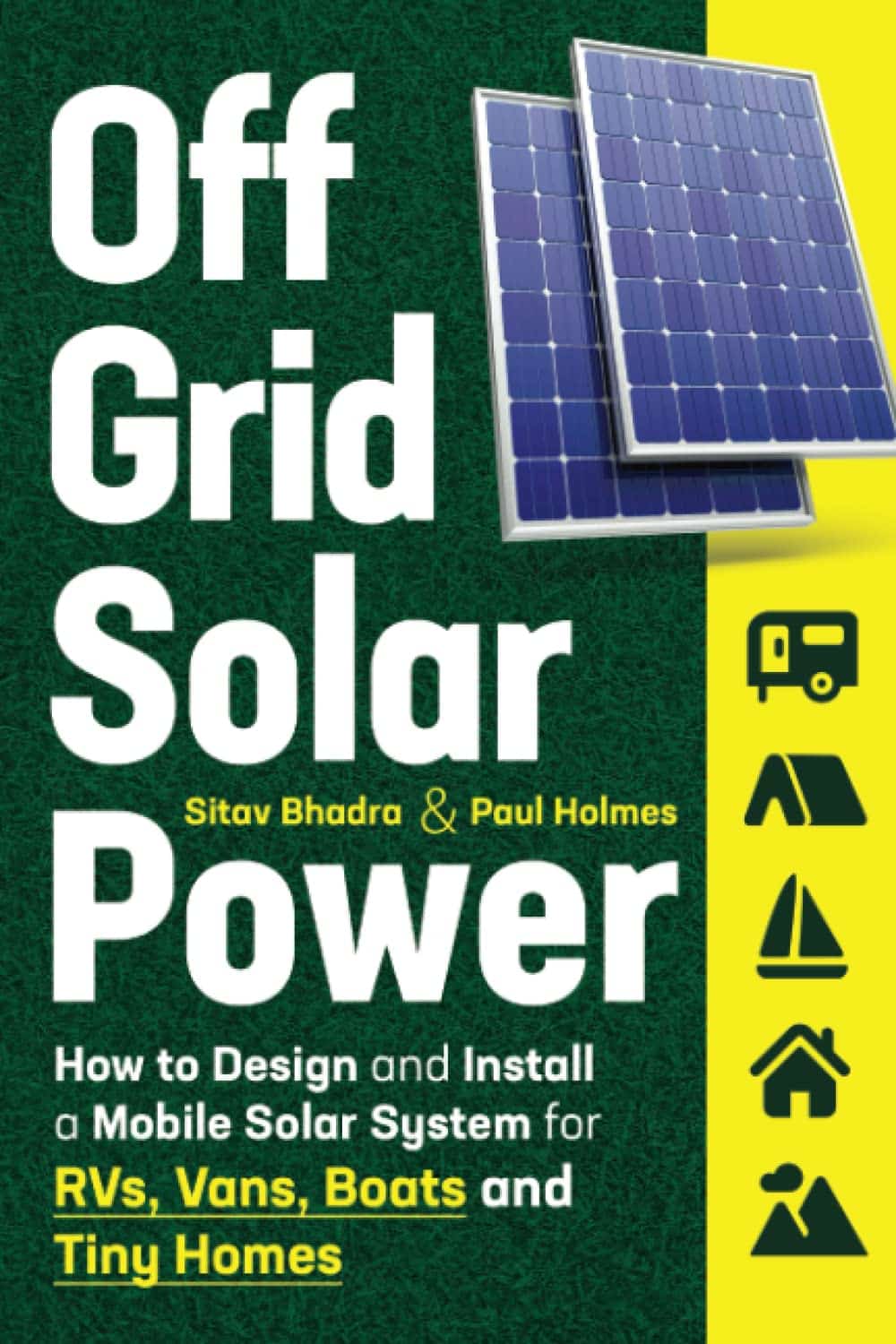
If you’re looking for a comprehensive guide on how to design and install a mobile solar system for your RV, van, boat, or tiny home, then Off Grid Solar Power is the book for you. It offers a detailed explanation of all the necessary steps to set up an off-grid solar system, even if you have no prior experience.
Pros
- The book provides a wealth of information on off-grid solar systems, including everything from the basics of electricity to the specifics of solar panels and batteries.
- The author’s writing style is clear and easy to understand, making it accessible to beginners and experts alike.
- Off Grid Solar Power includes practical tips and advice on how to troubleshoot common problems and maintain your solar system over time.
Cons
- The book is focused solely on mobile solar systems, so it may not be as useful if you’re looking to set up a stationary off-grid system.
- Some readers may find the technical details overwhelming, especially if they have no prior experience with solar power.
- Off Grid Solar Power doesn’t cover the financial aspects of setting up a solar system, such as the costs involved or potential savings.
Overall, we highly recommend Off Grid Solar Power to anyone looking to set up a mobile solar system. The book provides a comprehensive guide to all the necessary steps, and the author’s clear writing style makes it easy to follow along. Whether you’re a beginner or an expert, this book is an excellent resource for anyone interested in off-grid solar power.
In the first chapter, the author provides an overview of electricity and how it works, making it easy for readers to understand the basics of solar power. The subsequent chapters cover topics such as solar panels, batteries, charge controllers, and inverters, providing detailed explanations of how each component works and how to choose the right ones for your system.
One of the standout features of Off Grid Solar Power is the author’s practical advice on how to troubleshoot common problems that can arise with solar systems. For example, he provides tips on how to diagnose issues with your batteries or solar panels and how to fix them quickly and easily.
Overall, Off Grid Solar Power is an excellent resource for anyone looking to set up a mobile solar system. It provides a wealth of information on all the necessary components and steps involved, and the author’s clear writing style makes it easy to follow along. If you’re looking to go off-grid and want to use solar power, this book is an essential resource.
MARBERO 60W Portable Solar Panel
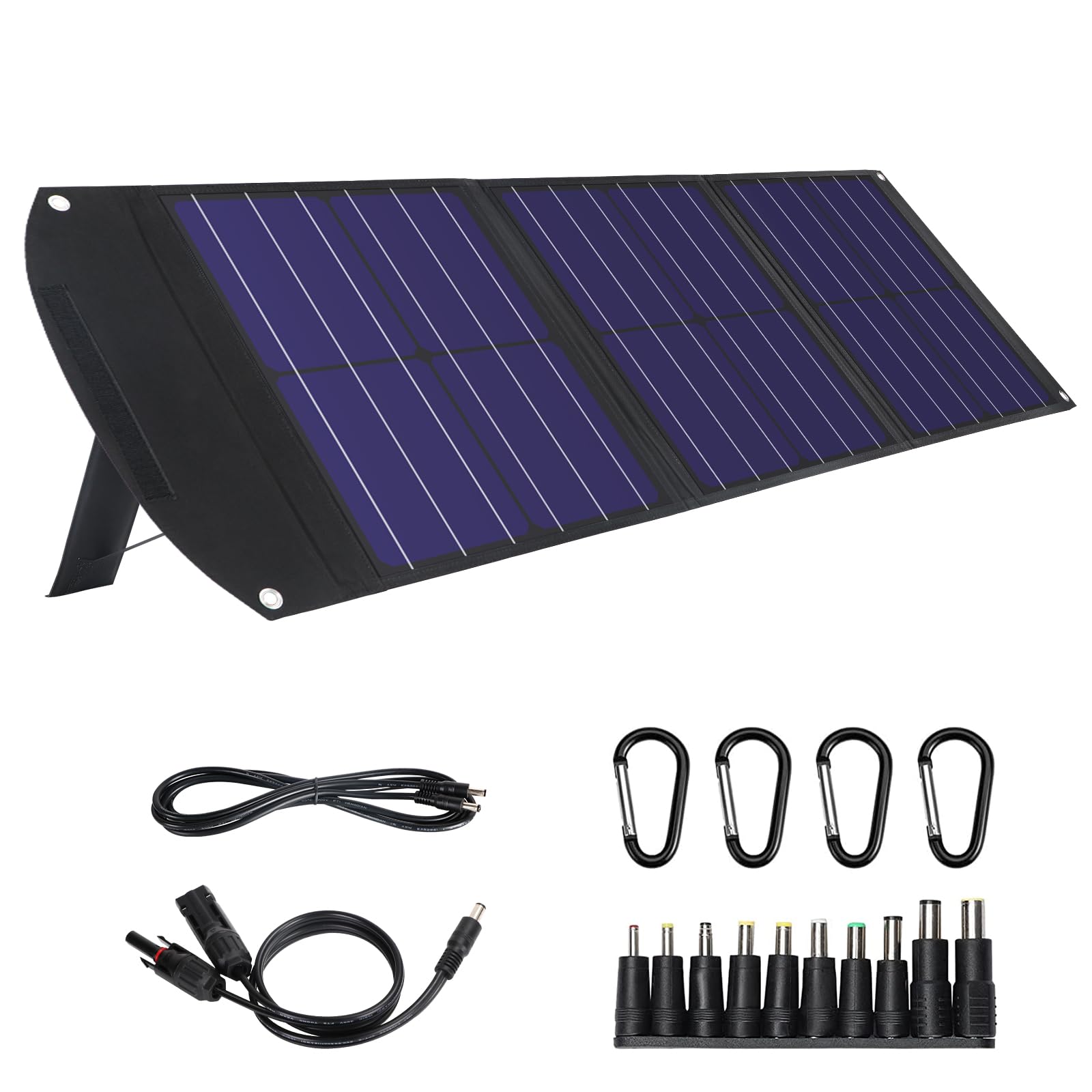
If you’re looking for a portable solar panel that can keep your devices charged off the grid, the MARBERO 60W Portable Solar Panel may be worth considering.
Pros
- The foldable design and lightweight construction make it easy to carry and store.
- The solar panel is compatible with most solar generators and portable power stations on the market.
- The solar panel has multiple USB output ports that can charge a variety of devices.
Cons
- The charging efficiency may be affected by clouds or covers.
- The directions may be difficult to read.
- The solar panel may not charge some devices quickly enough.
We recently had the opportunity to test out the MARBERO 60W Portable Solar Panel, and overall, we were impressed with its performance. The foldable design and lightweight construction make it easy to pack and carry, and the included carabiners make it easy to attach to your backpack or tent.
One of the standout features of this solar panel is its compatibility with most solar generators and portable power stations on the market. The 10 included DC connectors make it easy to charge the MARBERO portable power station, and the 18V DC output can also charge car refrigerators, air pumps, and other DC devices.
The solar panel also has multiple USB output ports, including a QC3.0 USB port, a USB C port, and a regular USB port. This allows you to charge a variety of devices, including smartphones, tablets, iPads, digital cameras, GPS, power banks, and more.
While we found the solar panel to be effective overall, we did notice that the charging efficiency was sometimes affected by clouds or covers. Additionally, the directions could be difficult to read, which may be frustrating for some users. Finally, we found that the solar panel may not charge some devices as quickly as we would like.
Overall, if you’re looking for a portable solar panel that can keep your devices charged off the grid, the MARBERO 60W Portable Solar Panel is definitely worth considering.
ECO-WORTHY 3.2GPM Solar Well Pump Kit

If you’re looking for a solar water pump solution for remote watering without electric power, the ECO-WORTHY 3.2GPM Solar Well Pump Kit may be worth considering.
Pros
- The ECO-WORTHY Solar Well Pump Kit is easy to launch and can be powered by some car or boat battery.
- It offers a solar water pump solution for remote watering without electric power, like garden, farm irrigation and tank filling.
- The ECO-WORTHY Solar Well Pump Kit has a maximum pump lift of 230ft(70M) and an open flow of 720LPH/192GPH, 12LPM/3.2GPM.
Cons
- The instructions for the controller are in very small print.
- The pump frequently stops working and runs through multiple error messages.
- The product is made in China and some users have reported quality issues.
We were impressed with the ECO-WORTHY Solar Well Pump Kit’s performance in remote watering situations. The pump is easy to launch and can be powered by some car or boat battery, making it a versatile option for off-grid living. Additionally, the pump has a maximum pump lift of 230ft(70M) and an open flow of 720LPH/192GPH, 12LPM/3.2GPM, which is impressive for a solar-powered pump.
However, some users have reported quality issues with the product, and the instructions for the controller are in very small print. Additionally, the pump frequently stops working and runs through multiple error messages, which can be frustrating.
Overall, we would recommend the ECO-WORTHY Solar Well Pump Kit for those looking for a solar water pump solution for remote watering without electric power. However, buyers should be aware of the potential quality issues and the small print instructions.
Check it out for yourself here.
Buying Guide
When it comes to living off the grid with solar panels, choosing the right product can be overwhelming. With so many options available, it is important to consider certain features to ensure that you get the best product for your needs.
Firstly, it is important to consider the wattage of the solar panels. This will determine the amount of energy that can be produced and stored. We recommend choosing a solar panel with a wattage that is suitable for your energy needs.
Secondly, consider the type of solar panel. There are two main types: monocrystalline and polycrystalline. Monocrystalline panels are more efficient but also more expensive, while polycrystalline panels are less expensive but slightly less efficient.
Thirdly, consider the durability of the solar panels. It is important to choose panels that are weather-resistant and can withstand extreme temperatures. This will ensure that your panels will last for many years.
Fourthly, consider the size and weight of the solar panels. This will determine how easy they are to install and transport. We recommend choosing panels that are lightweight and easy to handle.
Lastly, consider the warranty and customer support offered by the manufacturer. A good warranty and customer support can give you peace of mind and protect your investment.
In summary, when choosing solar panels for living off the grid, consider the wattage, type, durability, size and weight, and warranty and customer support offered by the manufacturer. By taking these factors into consideration, you can ensure that you get the best product for your needs.
Frequently Asked Questions
How does weather affect the performance of off-grid solar systems?
Off-grid solar systems are designed to operate in all weather conditions. However, the performance of the system may be affected by extreme temperatures, such as extremely hot or cold weather. In addition, cloudy or overcast weather can reduce the amount of energy the system generates. It is important to take these factors into consideration when designing an off-grid solar system.
Is it feasible to power an entire home using an off-grid solar system?
Yes, it is possible to power an entire home using an off-grid solar system. However, the size of the system required will depend on the energy needs of the home. It is important to calculate the energy requirements of the home before designing an off-grid solar system.
What is the typical number of batteries required for a residential off-grid solar setup?
The number of batteries required for a residential off-grid solar setup will depend on the energy needs of the home. Typically, a residential off-grid solar setup will require several batteries to store energy for use when the sun is not shining.
What are the common challenges associated with maintaining an off-grid solar system?
The common challenges associated with maintaining an off-grid solar system include monitoring the system to ensure it is working properly, cleaning the solar panels to ensure they are free of debris, and replacing batteries as needed. It is important to have a maintenance plan in place to ensure the system continues to operate efficiently.
Can an off-grid solar system be scaled to power an RV or tiny home effectively?
Yes, an off-grid solar system can be scaled to power an RV or tiny home effectively. The size of the system required will depend on the energy needs of the RV or tiny home. It is important to calculate the energy requirements of the RV or tiny home before designing an off-grid solar system.
What components are essential for a complete off-grid solar panel kit?
The essential components of a complete off-grid solar panel kit include solar panels, batteries, charge controller, inverter, and wiring. It is important to choose high-quality components to ensure the system operates efficiently. Additionally, it may be necessary to include backup components, such as a generator, in case of emergencies.
